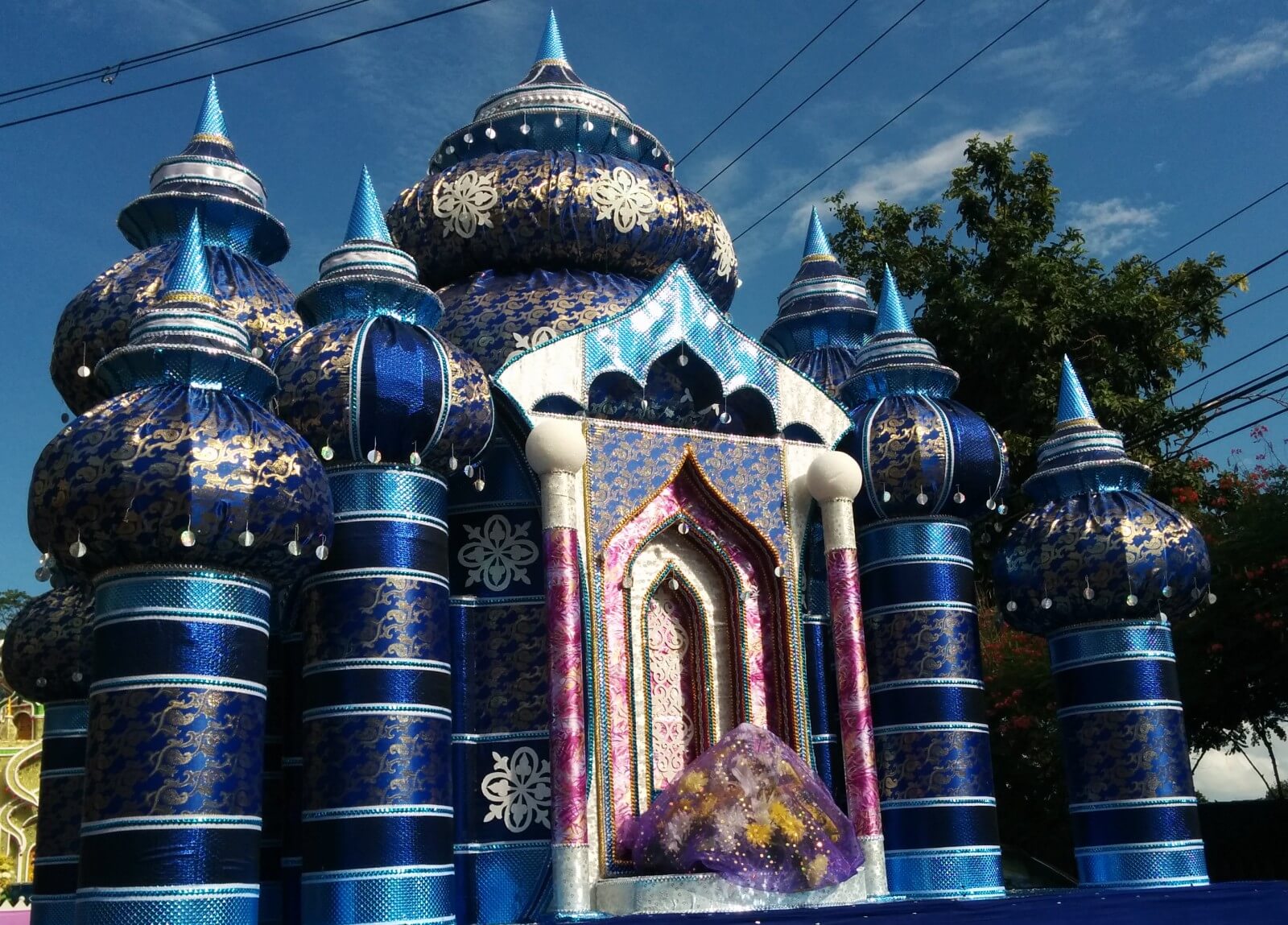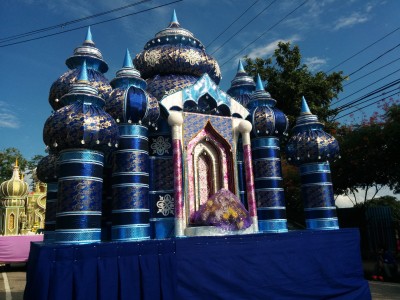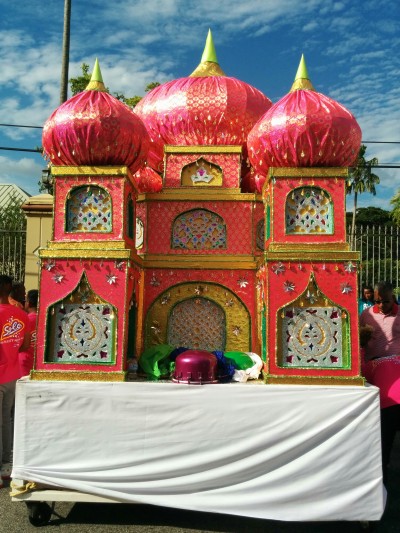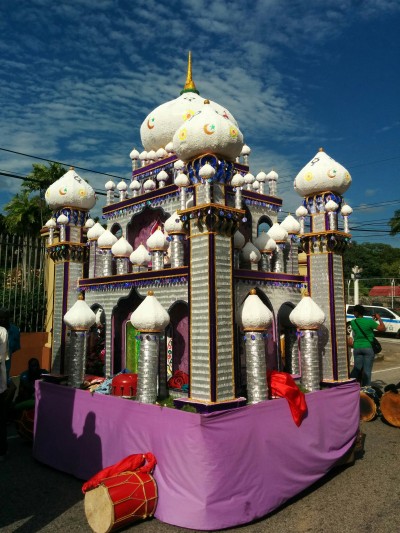
Hosay
The sight of the elaborately decorated tadjahs making its way down the streets with the convoy of people and tassa drums have evolved from a solemn religious festival to a cultural experience.
Details
Every year, Hosay is observed with a parade full of colourful tadjahs in commemoration of the martyrdom of Husayn (also spelled Hussein) and Hassan, the grandsons of Muhammad, the Prophet of Islam. The remembrance lasts for ten days at a period determined by the lunar/moon calendar. It can be early or late in the year but is observed in the Muharram month.
History
Hosay, derived from the name Husayn, is a religious ceremony observed by Shi’a Muslims. Husayn and Hassan were assassinated by Yazid in the Battle of Karbala, 680 AD. This Battle of Karbala is commemorated throughout the world during a ten-day period held every Muharram (called the Mourning of Muharram), and it culminates on the tenth day known as the Day of Ashura. In the Caribbean, mainly Trinidad and Tobago, the Day of Ashura is commemorated as Hosay. The events are observed by fasting and prayer, construction of “tadjahs” and processions.
Hosay in Trinidad
The first noted celebration of Hosay was in 1847 in San Fernando, South Trinidad and there is evidence of Hosay celebrations in Chaguanas and St. James from as far back as 1865.
In 1884, British colonial authorities issued an ordinance to prevent public gatherings and the public Hosay commemorations. Thousands of Muslims tried to appeal the ordinance but it was ignored and processions still continued in some communities. Police did not attempt to stop it in St. James but at San Fernando, 22 people were killed by shots fired by the police to disperse the crowd. It happened on October 30th, 1884 and is commonly referred to as the Muhurram Massacre.
The Hosay Festival
The ten-day period begins with six days of fasting, prayer meetings and work on the construction and decorations of tadjahs. Tadjahs are decorated models of mosques and are said to be replicas of Hussein’s and Hassan’s tombs. The tadjahs are expertly crafted from bamboo, multi-coloured paper, tinsel and glass and some can be up to ten-fifteen feet tall.
Day Seven – “Flag night”
The street processions begin with “Flag night”. Hundreds of devotees walk through the streets carrying multi-coloured flags to symbolize the beginning of the Battle of Kerbala in which the brothers lost their lives.
Day Eight – Small Tadjah Procession
On the second night of processions, small tadjahs are carried slowly through the streets to the sound of throbbing Tassa drums. They are symbolic of war drums and played in set rhythms that are common throughout the world.
Day Nine – Large Tadjah Procession
The larger tadjahs are carried throughout the street and the procession is accompanied by tassa drummers. Two moons representing Husayn and Hassan are built and carried by special dancers. The dance of the moons on this night depicts the brothers’ triumph over death.
Day Ten – Day of Ashura/Hosay
On the last day, there is a parade of tadjahs made by the different communities and tassa drumming through the St. James district. This procession begins at approximately 10am and events continue until 6pm. This is because it is Islamic custom for the interment of the dead to be done before the sun goes down. Throughout the day the tadjahs merge into a chain of beautiful pageantry paired with the ceremonial drumming of the tassa. The tadjahs are taken to a sacred spot for prayers and offerings. After this rite, the tadjahs are then submerged into the sea or body of water. The practice is not strictly Muslim; it is related to the Hindu ritual of drowning the model of deities in water.
The sight of the elaborately decorated tadjahs making its way down the streets with the convoy of people and tassa drums have evolved from a solemn religious festival to a cultural experience.
Locations it can be observed
The vibrant procession held in St. James, a suburb of Port of Spain, is the largest observance and some of the more spectacularly decorated tadjahs may be seen here. One can also find Hosay processions in Curepe, Tunapuna, Couva and Cedros.
Dates for upcoming years (2017, 2018, 2019)
2016 11th October
2017 1st October
2018 20th September
2019 10th September
2020 30th August
The parade draws thousands of spectators of all religions every year. Participation does not depend on religion, creed or race.
No matter where you choose to view this festival, please remember that because of its religious significance, alcohol is not encouraged.
Reviews
Click stars to rate








